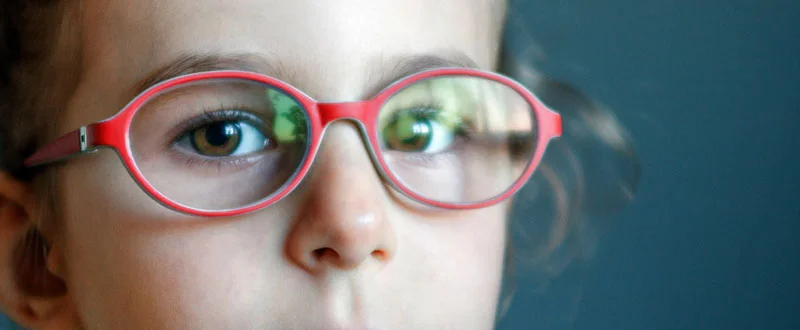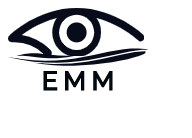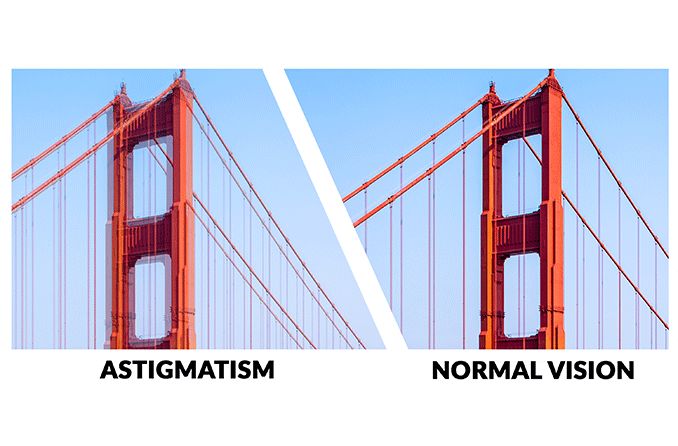Anisometropic amblyopia
Anisometropic amblyopia is a specific type of amblyopia (suppression of one eye). It occurs due to a significant difference in refractive error (nearsightedness, farsightedness, or astigmatism) between the two eyes. In this condition, one eye has a significantly different level of refractive error compared to the other eye, causing the brain to favor the eye with better focus (good eye) and resulting in reduced visual acuity in the eye with the higher refractive error.

Stereopsis-depth perception
This condition affects the stereopsis which is a binocular phenomenon. Stereopsis is essential for everyday tasks that require depth perception, such as judging distances, catching or throwing objects accurately, and perceiving the spatial layout of the environment. It contributes to our ability to navigate the world safely and efficiently. In stereopsis, the brain processes two different images from both eyes and combines them to create a perception of depth and the perception of objects in 3D.
How bad eye undergo suppression
The brain functions in synchronization with both of our eyes. It processes the images received by both eyes simultaneously. In the above mentioned condition, one of the eyes which is having poor visual acuity will not produce the qualitative image as produced by the good eye. The brain fuses the images of the same object into one image as both the eyes perceive image on their respective retina. In this condition two images of different sizes are being perceived on the two eyes of retina. the brain can not fuse them into single image. It prefers to show us one image with comparatively less or no stereopsis and omits the information received by bad eye/anisometropic amblyopic eye. The brain takes this step to prevent us from diplopia condition. The bad eye or anisometropic eye also known as non-fixating eye.
Development
Anisometropic amblyopia often develops during early childhood when the visual system is still developing. If left untreated, the affected eye may not develop normal visual acuity, depth perception, and binocular vision. How ever it can also develop later in life due to anisometropia due to optical or petrological causes.
Diagnostic methods
We can diagnose this situation by the following methods
Visual acuity and refraction
A significant difference in visual acuity between the two eyes can be an indication of of anisometropia and potential amblyopia.
Pupil examination
The ocular physician may examine the size and reaction of the pupils to check for any signs of abnormalities or possible underlying conditions that may contribute to amblyopia e.g. onset of cataract in one eye or any other underlying pathology.
Binocular vision assessment
The doctor may perform tests to evaluate the coordination and alignment of the eyes, such as the cover-uncover test or the prism test, stereopsis tests. These tests help to determine any misalignment of eyes, which can be associated with amblyopia. These tests also reveal which eye is suppressed or can undergo suppression.
Cycloplegic refraction
The cycloplegic refraction gives more accurate evaluation of the refractive error and reveals anisometropia.
Regular eye examinations during early childhood are crucial for early detection and management of amblyopia.
Management of anisometropic amblyopia
The first step in managing anisometropic amblyopia is to correct the refractive error in both eyes. Eyeglasses or contact lenses are prescribed to provide clear vision. However, eyeglasses are preferred. This helps to stimulate visual development in an amblyopic eye. In case studies, it can clearly be seen how the eyeglasses are helping the anisometropic amblyopic patients to develop stereopsis by restoring fusion.
Patching or occlusion therapy
Occlusion therapy, also known as patching, involves covering the stronger eye with an eye patch for a specified period each day. By temporarily blocking the vision in the stronger or good eye, occlusion therapy encourages the weaker eye to work harder and develop better visual acuity. The patching duration varies based on the individual’s age and the severity of amblyopia due to anisometropia.

Penalization
Instead of using an eye patch ,in those patients who are not showing any compliance with it, atropine eye drops can be used to blur the vision of good eye. This compels the weaker eye to take active participation invisual processing. The drops are typically applied to the stronger eye once a week or as prescribed by the eye care professional.
Vision therapy exercises
Vision therapy aims to improve eye coordination, visual processing skills, and depth perception. The ocular physician recommends vision therapy exercises in addition to optical correction and occlusion therapy.
Regular follow-up visits
Regular follow-up visits Regular follow-up visits with the eye care professional are crucial to monitor progress, make any necessary adjustments to the treatment plan, and ensure that the amblyopia is being effectively managed.
Can we restore stereopsis
The primary treatment for anisometropic amblyopia is the refraction of corrective error in both eyes. This is typically done by prescribing eyeglasses or contact lenses that correct the vision in both eyes. By providing clear and equal visual input to both eyes, the brain is encouraged to develop normal vision in the amblyopic eye, restoring stereopsis as well.
Founder of EyesMatterMost- an optometry student who loves talking about eyes. I tend to cover topics related to optometry, ophthalmology, eye health, eyecare, eye cosmetics and everything in between. This website is a medium to educate my readers everything related to eyes.

